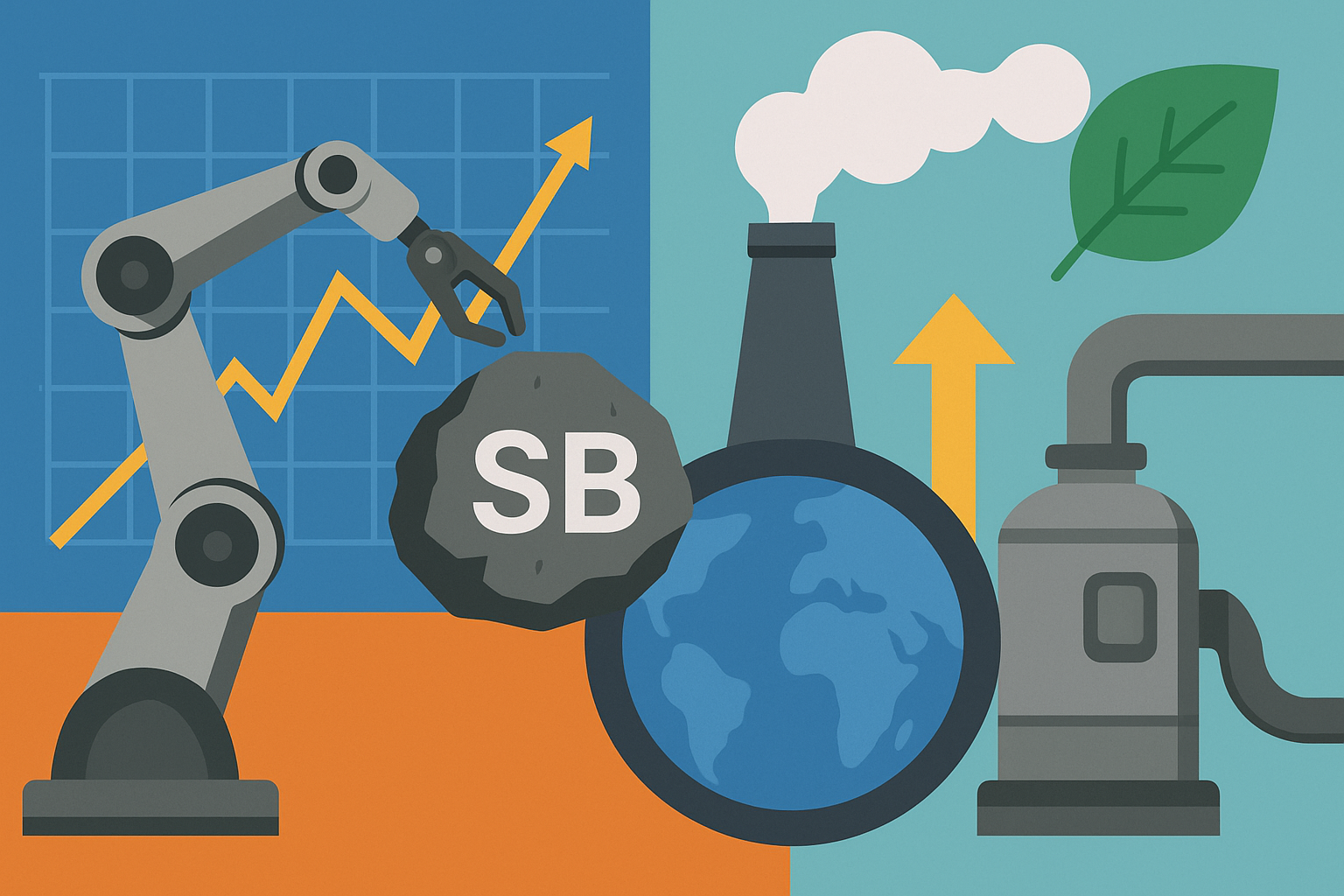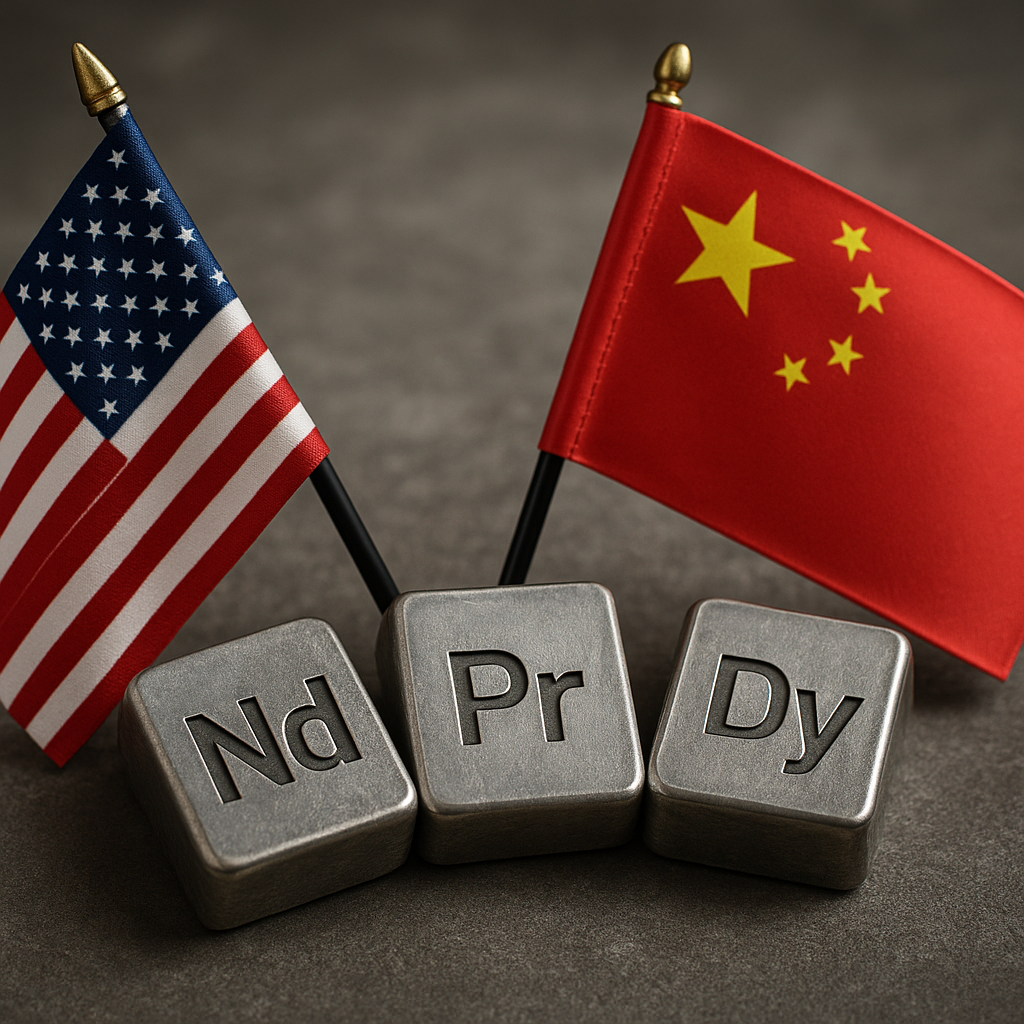Global markets are recalibrating their focus on supply chain security, and a little-known mineral—antimony—is taking center stage. Perpetua Resources is currently in active negotiations with global mining giants including Glencore and Trafigura to establish U.S.-based antimony processing capacity. The development, if realized, could represent a pivotal step in reshoring critical mineral supply chains and reducing reliance on imports, particularly from China and Russia, which dominate the current market.
At the same time, the energy and environmental technology sectors are intersecting with mining. Babcock & Wilcox announced a ~$10 million order—part of a potential $40 million pipeline—to supply advanced wet gas scrubbing technology to a Canadian refinery. The move highlights how clean-tech engineering is becoming indispensable to resource and energy industries facing tighter environmental standards.
Why Antimony Matters for Investors
Antimony is classified by the U.S. Geological Survey (USGS) as a critical mineral due to its essential role in national security and industrial applications. It is used in flame retardants, batteries, semiconductors, and specialty alloys that strengthen metals in defense and aerospace applications.
Currently, more than 70% of global antimony production comes from China, while Russia is another significant supplier. This concentration poses risks. The U.S. imports nearly all of its antimony, leaving industries vulnerable to geopolitical disruptions.
According to the International Energy Agency (IEA), demand for critical minerals like antimony could increase 2–3x by 2040 due to growth in clean energy technologies. Onshoring processing capacity would give U.S. firms and their partners greater control over pricing, supply, and strategic reserves.
Shifting Supply Chains and Strategic Premiums
The reported talks between Perpetua Resources and trading giants such as Glencore and Trafigura underscore how majors are repositioning themselves for the critical minerals boom. A domestic antimony processing plant would not only secure U.S. supply but could also command strategic premiums as industries look to lock in domestic sources.
Bloomberg recently reported that institutional investors are increasingly monitoring the antimony space, particularly in connection with battery technology innovation and defense contracting. Early-stage deals could quickly turn into high-value joint ventures, rewarding firms that secure processing capacity first.
Environmental Technology Meets Mining
Alongside the resource story, environmental technology is becoming a parallel investment play. Babcock & Wilcox’s wet gas scrubbing systems—designed to reduce sulfur dioxide and particulate emissions—are now finding traction in North American refineries. The $10 million order to a Canadian facility, with potential to expand to $40 million, illustrates how mining-adjacent clean-tech solutions are riding the wave of stricter regulations and the global push toward decarbonization.
For investors, this demonstrates a dual opportunity: critical mineral producers on one side and environmental technology providers enabling compliance on the other. The intersection of resource extraction and sustainability is increasingly where new capital is flowing.
Future Trends to Watch
- Onshoring Momentum: Expect more U.S. and Canadian firms to pursue local processing facilities for critical minerals including antimony, lithium, and rare earths.
- Partnership Deals: Joint ventures between resource companies and trading houses will likely accelerate as global supply chains shift.
- Environmental Compliance as a Growth Market: Mining firms face rising costs for emissions controls, creating long-term demand for companies like Babcock & Wilcox.
- Defense and Energy Nexus: Antimony’s role in military alloys and energy storage makes it a key mineral for both the Pentagon and clean energy firms.
Key Investment Insight
Investors should monitor which companies secure processing contracts for antimony, as these firms could see outsized gains amid tightening supply dynamics. In parallel, mining-adjacent technology providers like Babcock & Wilcox are well positioned to capture value from regulatory-driven demand. The dual track of critical minerals and clean-tech solutions may define the next wave of resource-linked growth opportunities.
For investors navigating these developments, the message is clear: the shift in U.S. critical minerals strategy is not just about supply security—it’s about creating new value chains at the intersection of resources, technology, and sustainability.
Stay connected with MoneyNews.Today for daily insights on the global trends reshaping markets.





